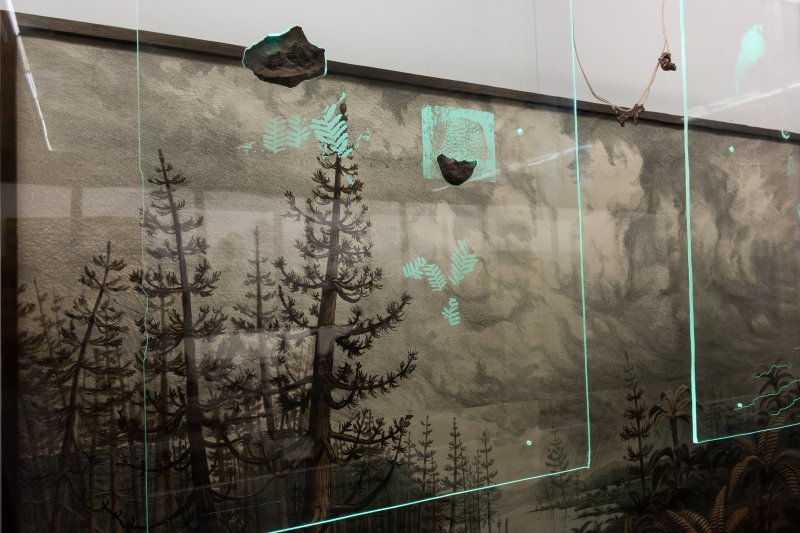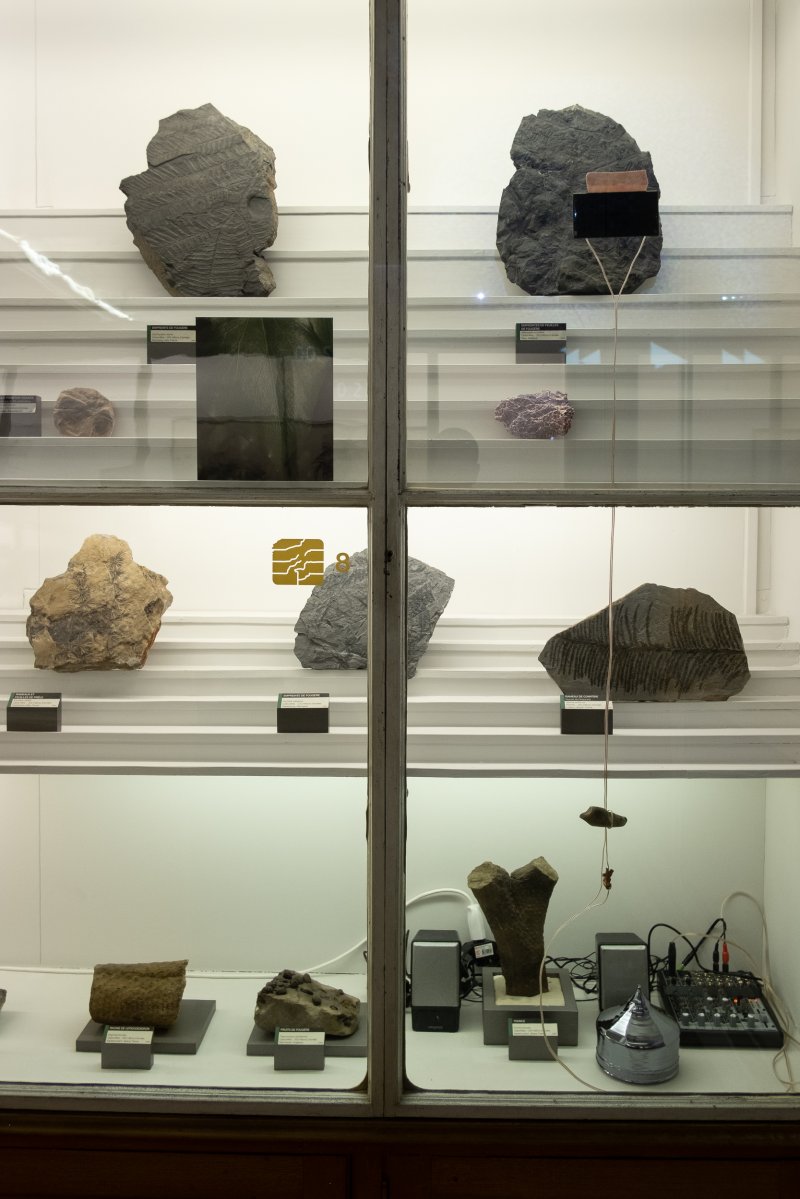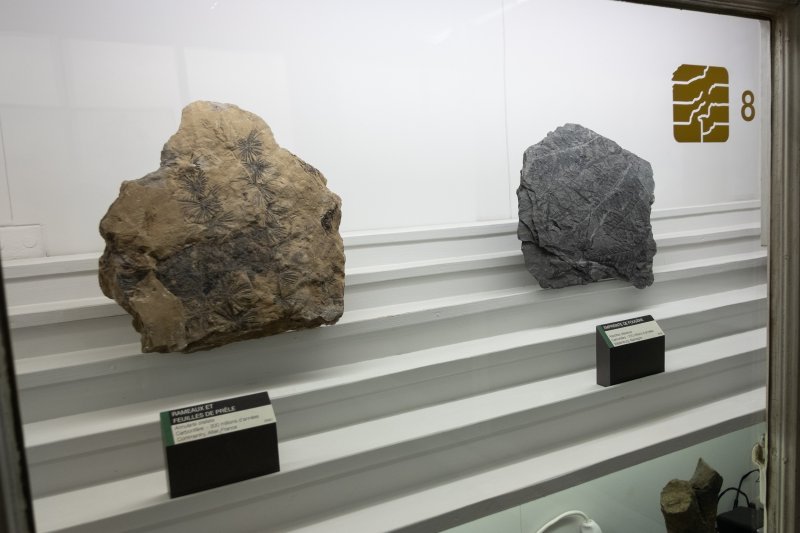Hunter Longe
Social and economic issues are not directly the subject matter, but they form the physical boundaries within which I can be creative - Hunter Longe in interview
How would you describe the influence of social and economic issues in your work?
Hunter Longe (HL): I feel like social and economic issues are all-pervasive. Most of us live in the undulating shit ripples of very few people’s absolute greed. By default, these issues seep into my work. I sometimes find humans and society overwhelming. I am troubled by the power of corporations, the concentration of wealth, and the ease with which extreme-right proponents manipulate the media, etc.. It often feels depressingly hard to escape. The more I learn about the history of western civilization and colonialism, the more haunted I am by the violence, and that it just keeps going. Generally, I try to sift through, learn and unlearn, listen and unpack all this. Perhaps in reaction, in my art practice, I am drawn toward ideas and materials that make me curious, that fascinate me and that give me hope. I also consciously seek out a diverse range of inspiration. The materials I use, like yogurt containers, little solar panels, stones, and especially for the small scale of works, seem related to my own economic precarity. The space I have is little. The amount of time I can dedicate to my practice is determined of course by how much I have to work other side jobs. So I’d say, social and economic issues are not directly the subject matter, but they form the physical boundaries within which I can be creative.
Over the past decade, the link between art and science has been a topic frequently discussed. In this context, art has often been considered as an effective tool for the production of alternative forms of knowledge. How do you see this idea?
HL: Geo in Greek, means Earth, but it stems from the word Gaia, which was the name of the Greek goddess of Earth. So perhaps the science of Geology, is both the study of the planet as well as an unconscious deciphering of the ancient goddess’s material language, a language we don’t yet speak, or that some of us seem to have forgotten how to speak.
Likewise, maybe the Large Hadron Collider in Geneva is a gigantic underground sculpture of metal, vacuum tubes and magnets, assembled for the production of invisible art, the indirect arts.
The late author and poet Ursula K. Le Guin, who has been a great inspiration to me the last couple of years, wrote, “truth is a matter of imagination.” With its stories of black holes, extra dimensions, holographic renormalization groups, dark matter and parallel universes, contemporary physics has become a science of the imaginary.
I like how the philosopher Isabelle Stengers points out that physicists have become poets “in the etymological sense, that the poet is a ‘maker’—active.” Indeed joseph Lykken, a physicist at the Large Hadron Collider said of the Higgs Boson particles, “they are not sitting around, it’s not that you find them, you have to actually make them.” To Stenger’s point, physicists imagine particles, then develop the tools to make them, all the while claiming they are fundamental beings as old as time, the very things that compose us—her and Bruno Latour call these types of things “factishes.” In acknowledging this phenomenon, the poet Christian Bok says, “science has finally achieved the hyperbole of its own ‘death,’ so to speak, disappearing into a condition of tautologic metalepsis, paradoxically becoming both the cause and effect of its own virtual reality.”
I feel like the paths of science and art are much more intermingled than we are lead to believe. Generally, one might say that scientists aim to ‘make sense’ of the world they desperately hope is not meaningless, whereas for me as an artist, I’m quite okay with meaninglessness. I like the idea that world might not ‘make sense’ or is just plain weird.
All this said, there have been major problems brought on by the kind of scientific western worldview that has dominated in recent centuries. We seem to face a moment in which voices and stories outside of the dominant worldview desperately need to be heard. I hold out hope that art can offer the tools to convey those messages, whether visible, audible, tangible or hypnotically intangible.

Can science save humanity for you? What types of discoveries would you find convincing for this?
HL: I recently visited the American Musuem of Natural History in New York with some family. Amongst their vast collection, we saw a special T-Rex exhibition, (a real blockbuster for the masses). Apparently the T-Rex were utterly violent. They would sometimes even eat their own offspring. But just as the randomness of evolutionary mutation brought forth these viscous killers, a massive meteor hit the planet. New simulations reveal that pretty much everything living above ground was burned alive. Dinosaurs went extinct in one day. My take from this was that the universe is quite unstable and chaotic.
So, I guess my answer would be no. What does humanity need saving from other than itself?
Aside from the aforementioned social and economic problems, with a look at statistics, humanity seems to be thriving. The population is on an unprecedented increase since the 1800s. But as the GDP increases, so do greenhouse gas emissions, inequality and the death-rate of entire species. If one could observe from a different animal’s perspective, or from an alien perspective, perhaps humans are an invasive or a kind of virus. From a human perspective, we can see that some of us have begun to cause much detriment to our cohabitors and habitats—namely global warming and mass extinction. I’m guessing question is in relation to this. In a 2014 talk at a Bioneers conference, the journalist Naomi Klein critiqued the strange notion held by many environmentalists and technocrats that we need to “save the Earth”. And she says, “our challenge is less to save the Earth from ourselves, and more to save ourselves from an earth that, if pushed too far, has ample power to rock burn and shake us off” (https://www.youtube.com/watch?v=Jdaxehd0cF0). So maybe that is what you mean.
To think new technologies will solve the problems created by our previous technological mistakes, to me, seems destined to a nightmarish feedback loop, with each trip around the loop, the side-effects amplifying into an unbearable screech. The latest report from the UN’s Intergovernmental Science-Policy Platform on Biodiversity and Ecosystem Services (https://www.un.org/sustainabledevelopment/blog/2019/05/nature-decline-unprecedented-report/), estimates that some 1 million plant and animal species are threatened by extinction in the next few decades. The various “hard” sciences do help us to see and quantify what is happening and what has happened, which is super important. But they historically stem from a worldview based on human-separatism, which seems to be the type of thinking that got us into this problem in the first place and continues to exacerbate it.
To save ourselves from ourselves would seem to require something else, at the very least more empathy toward the non-human, even for the things that we do not consider to be living. To that question, I do not think the techno-fix is the answer. Maybe the social sciences, but more likely a good start is looking toward the feminist thinkers and, even ancient myths and traditions. Kate Brauman, one of the authors of that UN report said on Democracy Now on May 9th, that when it comes to re-thinking land management and stewardship, part of it “is going to be really integrating what we know from indigenous and local cultures” (https://www.democracynow.org/2019/5/9/shocking_un_report_warns_up_to). We need hone in to the deep instincts and intuitions that have been sequestered by striving for the lie that is reason.

At what level do you think art can contribute to social and ecological change?
HL: Art often operates on instinct and intuition. It makes no false claim to objectivity. It plays with cause and effect. On an optimistic day, I think these are things that can contribute.
Thinking about some of the sci-fi novels I’ve read of the 60s and 70’s, there was already a ripe eco-awareness of global warming, of the negative effects of vast exploitation and what happens when resources are usurped for private profit. On a pessimistic day, I think, why is the problem getting worse. The warnings artists helped voice have not been heeded at all by those in power. Instead their predictions seem more true. I think, shit, we are really heading for some crazy dystopia, or are already in it. In Philip K. Dick’s The Three Stigmata of Palmer Eldritch, many earthlings have been drafted off to colonize nearby planets because Earth has become so hot it is hardly habitable (Elon Musk is trying to make this a reality now). In Myths of the Near Future, J.G. Ballard wrote: “... the over-bright hills wait, with the infinite guile of the geological kingdom, for the organic world to end and a more vivid mineral realm to begin.” In Ursula K. Le Guin’s The Word for World is Forest, a novel that quite clearly inspired the movie Avatar, set on a forested planet, where colonizers from Earth and Hain have begun logging, to sell wood back home, on planets that no longer have forests. The words in these books alter my mind as I read them, they change me. They inspire me.
In the intro to The Word for World is Forest, Le Guin sort of mocks this absurd quote by Freud, that artists are motivated by the desire “to achieve honour, power, riches, fame and the love of women.” Then she quotes a poem by Emily Brontë:
Riches I hold in light esteem
And Love I laugh to scorn
And lust of Fame was but a dream
That vanished with the morn—
And if I pray, the only prayer
That moves my lips for me
Is—“Leave the heart that now I bear
And give me liberty.”

Could you share here three articles and two videos that reflect your current research and/or issues that inspire you?
Monica Gagliano is a scientist that I think is doing really cool work. She has been doing experiments in plant communication, and plant behavioral studies that show plants have cognition and sentience. I love how these more fringe people in science are coming back around and dovetailing into animistic thinking. Her interview with Erik Davis on the podcast Expanding Mind is an inspiring listen.
https://expandingmind.podbean.com/e/expanding-mind-–-speaking-with-plants/
Here is Monica Gagliano on a panel with Micheal Pollan, discussing plant intelligence and entheogens, etc. This one could be listened to while doing other stuff, like drawing or working in the garden or whatever.
https://www.youtube.com/watch?v=LlyZl33Chz8
Mineral Evolution, Robert Hazen, et al. I am especially intrigued by the idea that some two thirds of the minerals on Earth evolved after plants and bacteria filled the atmosphere with oxygen. In otherwords, minerals and plants/living things co-evolve.
https://sci-hub.tw/10.2138/am.2008.2955
On the mineralogy of the “Anthropocene Epoch” is about the massive explosion in inorganic compounds in the last few hundred years. Also, human-mediated minerals and the definition of what gets to be a mineral. (For people who don’t know about sci-hub.tw, that’s where you can find scientific articles for free.)
https://sci-hub.tw/10.2138/am-2017-5875